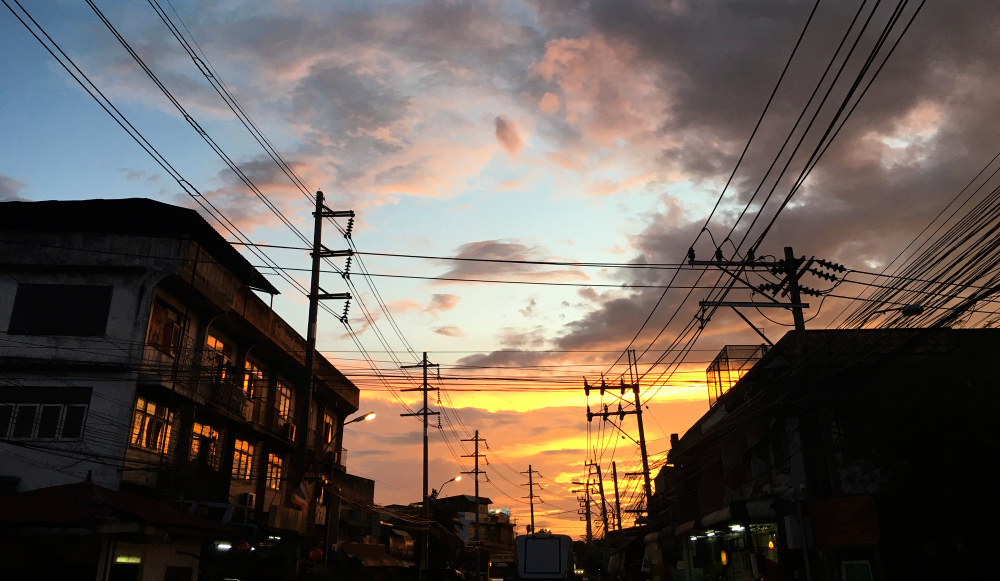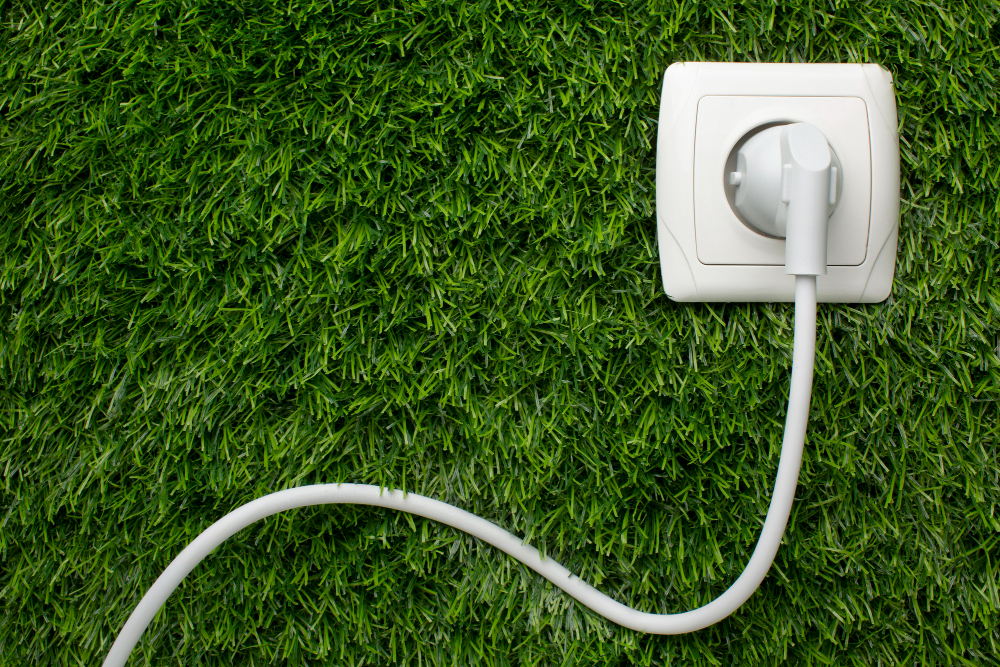Fungsi Tiang Listrik dalam Sistem Distribusi, Apa Saja Jenis-jenisnya?

Fungsi tiang listrik dalam sistem distribusi dan jenis-jenisnya mungkin belum banyak diketahui. Padahal, benda ini sangat dekat dengan keseharian kita sebagai pengguna energi listrik.
Dalam kehidupan sehari-hari, kita sering melihat tiang-tiang listrik yang berdiri tegak di sepanjang jalan. Meskipun terlihat biasa saja, tiang listrik ternyata memiliki peran yang penting dalam sistem distribusi listrik.
Artikel ini akan membahas mengenai apa itu tiang listrik, fungsi tiang listrik, serta jenis-jenis tiang listrik yang umum digunakan.
Baca Juga: Perbedaan Heat Detector dan Smoke Detector untuk Sistem Keamanan Gedung
Apa Itu Tiang Listrik?
Tiang listrik adalah struktur vertikal yang digunakan untuk mendukung kabel listrik di atas tanah. Tiang-tiang ini biasanya terbuat dari bahan seperti kayu, baja, beton, atau komposit, dan ditempatkan pada jarak tertentu untuk memastikan distribusi listrik yang aman dan efisien dari pembangkit listrik ke konsumen akhir.
Tiang listrik merupakan komponen vital dalam sistem distribusi listrik yang memiliki banyak fungsi penting. Dengan berbagai jenis dan komponen yang ada, tiang listrik terus berperan besar dalam memastikan aliran listrik yang stabil dan aman sampai ke rumah kita.
Fungsi Tiang Listrik
1. Menyokong Kabel Listrik
Fungsi utama tiang listrik adalah menyokong kabel listrik agar tetap berada di udara dan tidak bersentuhan dengan tanah atau objek lainnya. Dengan demikian, aliran listrik dapat berjalan dengan lancar, aman, dan tidak terganggu.
2. Meningkatkan Keamanan
Dengan menjaga kabel listrik tetap berada di atas tanah, tiang listrik membantu mengurangi risiko kebakaran dan kecelakaan yang mungkin terjadi akibat kontak langsung dengan kabel listrik.
3. Menjamin Distribusi Listrik yang Stabil
Tiang listrik memungkinkan distribusi listrik yang stabil dan efisien dari pembangkit listrik hingga ke rumah-rumah dan bangunan komersial.
4. Menopang Peralatan Lainnya
Selain kabel listrik, tiang listrik juga bisa menyokong berbagai peralatan distribusi lain, seperti trafo, isolator, dan penangkal petir.
Jenis-jenis Tiang Listrik
1. Saluran Udara Tegangan Rendah (SUTR)
Saluran Udara Tegangan Rendah (SUTR) adalah jenis tiang listrik yang digunakan untuk mendistribusikan listrik ke konsumen akhir, seperti rumah tangga dan bisnis kecil. Tegangan yang digunakan biasanya berkisar antara 220 hingga 380 volt.
Karena digunakan untuk distribusi jarak pendek, tiang SUTR sering ditemukan di lingkungan perkotaan dan pedesaan. Tiang ini relatif lebih pendek dan memiliki isolator yang lebih sederhana dibandingkan dengan tiang untuk tegangan yang lebih tinggi.
SUTR ideal untuk area dengan permintaan listrik rendah dan memudahkan penanganan gangguan karena lokasi yang dekat dengan konsumen.
2. Saluran Udara Tegangan Menengah (SUTM)
Saluran Udara Tegangan Menengah (SUTM) digunakan untuk mendistribusikan listrik dari gardu induk ke gardu distribusi. Tegangan yang digunakan berkisar antara 1 kV hingga 36 kV.
SUTM sering digunakan untuk distribusi listrik di kawasan industri dan pemukiman besar. Tiang-tiang ini lebih tinggi dan dilengkapi dengan isolator yang lebih canggih dibandingkan dengan SUTR.
Karena komponennya yang lebih kompleks, SUTM mampu mendistribusikan listrik dalam jarak yang lebih jauh dan cocok untuk kawasan dengan kebutuhan listrik menengah.
3. Saluran Udara Tegangan Tinggi (SUTT)
Saluran Udara Tegangan Tinggi (SUTT) adalah tiang listrik yang digunakan untuk transmisi listrik jarak jauh dengan tegangan antara 36 kV hingga 150 kV. SUTT umumnya menghubungkan pembangkit listrik dengan gardu induk utama.
Ketinggian tiang ini lebih signifikan dan strukturnya lebih kuat untuk menahan tegangan tinggi serta kondisi cuaca ekstrem.
SUTT digunakan untuk transmisi listrik jarak jauh yang lebih efisien dan mampu mengurangi kerugian energi selama transmisi karena kapasitasnya yang bisa membawa lebih banyak energi listrik dibandingkan dengan SUTM.
4. Saluran Udara Tegangan Ekstra Tinggi (SUTET)
Saluran Udara Tegangan Ekstra Tinggi (SUTET) adalah tiang listrik yang digunakan untuk transmisi listrik dengan tegangan di atas 150 kV, sering kali mencapai 500 kV atau lebih.
SUTET berfungsi untuk menghubungkan wilayah yang sangat luas dan mentransmisikan listrik dalam jumlah besar dari pembangkit listrik ke pusat-pusat beban.
SUTET mampu menyediakan pasokan listrik yang stabil untuk wilayah luas dan kapasitas tersebut digunakan untuk transmisi listrik dalam jarak yang sangat jauh.
5. Saluran Udara Tegangan Tinggi Arus Searah (SUTTAS)
Saluran Udara Tegangan Tinggi Arus Searah (SUTTAS) menggunakan arus searah (DC) untuk transmisi listrik. Teknologi ini biasanya digunakan untuk transmisi listrik jarak sangat jauh dan antarpulau atau negara.
SUTTAS memiliki keuntungan dalam hal efisiensi transmisi jarak jauh dan kapasitas pengiriman daya. Dengan adanya SUTTAS, pengiriman listrik antarwilayah menjadi lebih aman dan stabil.
Baca Juga: Bahaya dan Penyebab Listrik Spaning, Ketahui 4 Cara Mengatasi Gangguan Tegangan Rendah
Powered by Froala Editor

Fungsi tiang listrik dalam sistem distribusi sampai ke rumah kita tak dipungkiri memegang peran yang penting. Sebagai pengguna energi listrik yang sangat bergantung pada perangkat elektronik dalam kegiatan sehari-hari, sudah tentu kita harus menyadari bagian-bagian dari proses distribusi listrik, termasuk memahami pentingnya fungsi tiang listrik. Dengan demikian, kita dapat lebih bijak menggunakan energi listrik untuk masa depan yang lebih baik.
Powered by Froala Editor
Related News



